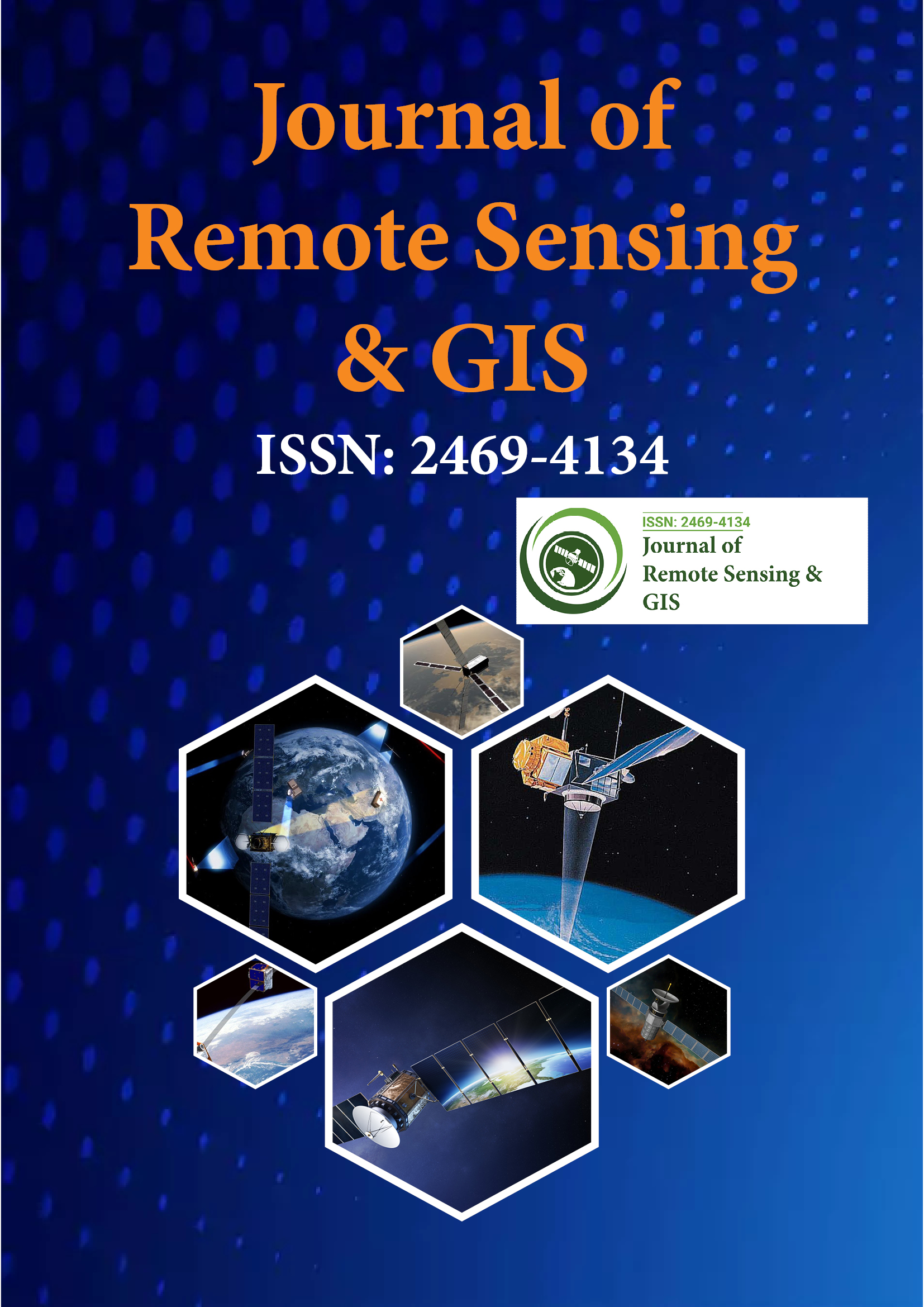Indexed In
- Open J Gate
- RefSeek
- Hamdard University
- EBSCO A-Z
- OCLC- WorldCat
- Publons
- International Scientific Indexing
- Euro Pub
- Google Scholar
Useful Links
Share This Page
Journal Flyer

Open Access Journals
- Agri and Aquaculture
- Biochemistry
- Bioinformatics & Systems Biology
- Business & Management
- Chemistry
- Clinical Sciences
- Engineering
- Food & Nutrition
- General Science
- Genetics & Molecular Biology
- Immunology & Microbiology
- Medical Sciences
- Neuroscience & Psychology
- Nursing & Health Care
- Pharmaceutical Sciences
Perspective - (2025) Volume 14, Issue 3
Analyzing Earthâs Dynamics Through Remote Sensing for Monitoring Natural and Human-Influenced Systems
Liam Harper*Received: 29-Aug-2025, Manuscript No. JGRS-25-30284; Editor assigned: 01-Sep-2025, Pre QC No. JGRS-25-30284(PQ); Reviewed: 15-Sep-2025, QC No. JGRS-25-30284; Revised: 22-Sep-2025, Manuscript No. JGRS-25-30284(R); Published: 30-Sep-2025, DOI: 10.35248/2469-4134.25.14.393
Description
Remote sensing techniques provide a dynamic approach for observing and analyzing the environment. These methods utilize sensors mounted on satellites, aircraft or drones to collect data over large areas without direct contact with the terrain. By capturing information across multiple spectral bands, remote sensing enables researchers to assess vegetation health, track land use changes and monitor water quality efficiently.
The ability to detect variations in land cover allows for early identification of environmental degradation. Forest health can be assessed through spectral reflectance, indicating areas affected by disease, drought or deforestation. Similarly, water bodies can be monitored for sediment levels, temperature changes and pollution using multispectral imaging. Agricultural applications benefit from remote sensing through crop monitoring, irrigation assessment and yield prediction, providing valuable insights for resource management and decision-making.
Thermal sensors detect temperature variations across surfaces, which can indicate volcanic activity, urban heat islands or irrigation efficiency. LiDAR systems generate precise topographic maps and 3D models, assisting in flood modelling, erosion control and infrastructure planning. Combining these tools allows for comprehensive spatial analysis, supporting research, planning and resource allocation.
Temporal analysis, comparing data collected over time, provides a deeper understanding of changes in ecosystems and human landscapes. This facilitates informed decision-making for land management, urban planning and disaster preparedness. The integration of remote sensing data with Geographic Information Systems (GIS) allows for visual representation, interpretation and spatial analysis.
Challenges in remote sensing include data volume management, calibration of sensors and interpreting results in heterogeneous landscapes. Despite these challenges, technological improvements in sensors, data transmission and processing software continue to enhance the accuracy and accessibility of remote sensing data.
Remote sensing techniques provide a comprehensive framework for observing, analyzing and managing environmental and human-influenced systems. By collecting data from satellites, drones and aerial platforms, these methods enable continuous monitoring of ecosystems, urban areas, agricultural landscapes and water bodies. The integration of spatial and temporal datasets allows researchers to track changes, detect emerging patterns and assess trends over time, providing actionable insights for decision-makers across multiple sectors.
In agriculture, remote sensing plays a vital role in crop monitoring and land management. Multispectral and hyperspectral imaging can detect variations in vegetation health, soil moisture and nutrient distribution, allowing farmers to identify stressed areas and optimize irrigation and fertilization schedules. This precise information helps increase yield, minimize resource wastage and maintain soil and water quality. Additionally, remote sensing supports large-scale agricultural assessments, enabling regional and national authorities to monitor food production and plan for resource allocation.
Forestry and ecosystem management also benefit significantly from remote sensing. High-resolution imagery and LiDAR data provide detailed information on forest cover, tree density, canopy structure and biodiversity indicators. These tools allow for monitoring deforestation, evaluating the impact of natural disturbances and assessing reforestation or afforestation initiatives. Such information is essential for conservation planning, climate change mitigation and maintaining ecological balance.
Urban planning and infrastructure management rely on remote sensing to monitor land-use changes, track urban sprawl and assess transportation networks. Planners can analyze population growth, expansion of built-up areas and environmental impacts to support sustainable development. Additionally, remote sensing facilitates disaster risk management by providing real-time information during floods, earthquakes, hurricanes and other natural events. Accurate mapping of affected areas enables rapid response, resource allocation and long-term recovery planning.
Water resource management and coastal monitoring are further strengthened through remote sensing. Changes in water quality, sedimentation patterns, shoreline erosion and coastal wetland health can be detected efficiently. This information aids authorities in protecting aquatic ecosystems, maintaining sustainable water use and implementing environmental protection policies. Remote sensing also contributes to climate research by tracking glacier retreat, sea-level rise, land degradation and carbon storage, providing critical data for predictive modelling and adaptation strategies.
The integration of remote sensing with Geographic Information Systems (GIS) and predictive modelling enhances the analytical capability of environmental monitoring. Combining datasets from multiple sensors and periods allows the creation of dynamic maps, identification of trends and simulation of potential scenarios. These integrated approaches improve the precision, efficiency and reliability of planning and management activities, supporting evidence-based decision-making.
Overall, remote sensing techniques offer a versatile and effective tool for environmental monitoring and management. By combining spatial data, temporal analysis and advanced imaging, these methods provide critical insights that support sustainable development, disaster preparedness, natural resource management and urban planning. They empower researchers, policymakers and planners to make informed, strategic decisions that promote ecological balance, economic efficiency and societal resilience.
Citation: Harper L (2025). Analyzing Earth’s Dynamics Through Remote Sensing for Monitoring Natural and Human-Influenced Systems. J Remote Sens GIS.14:393.
Copyright: © 2025 Harper L. This is an open-access article distributed under the terms of the Creative Commons Attribution License, which permits unrestricted use, distribution and reproduction in any medium, provided the original author and source are credited.

